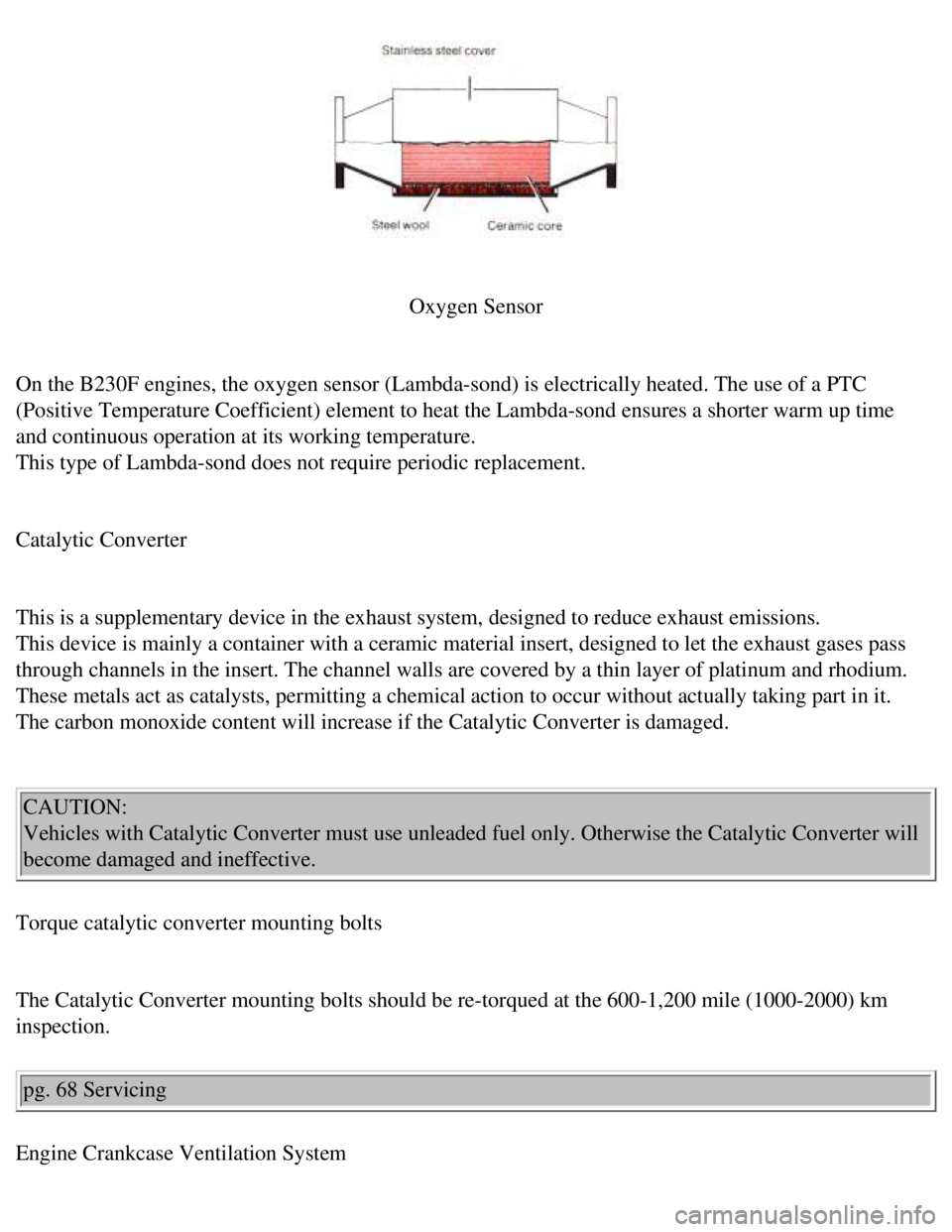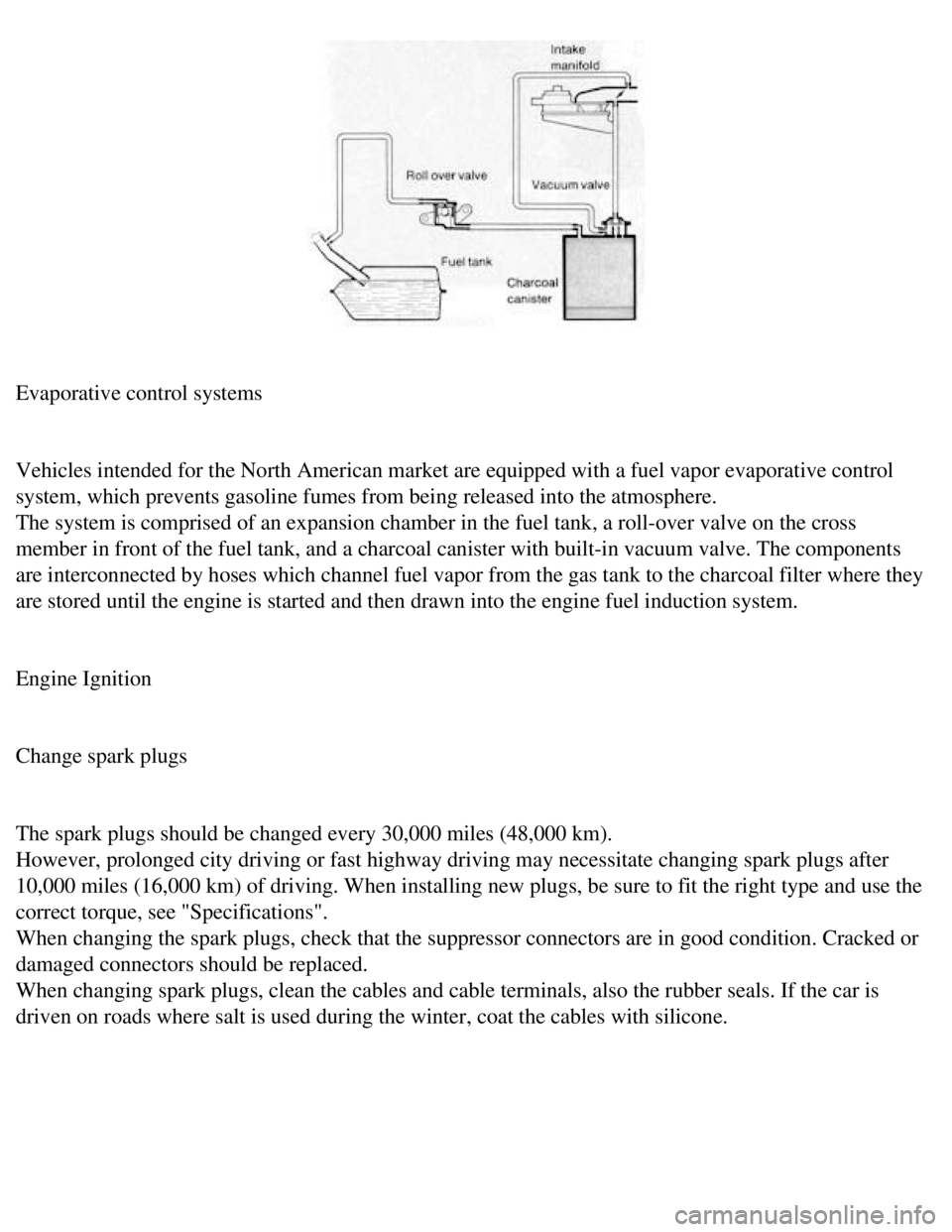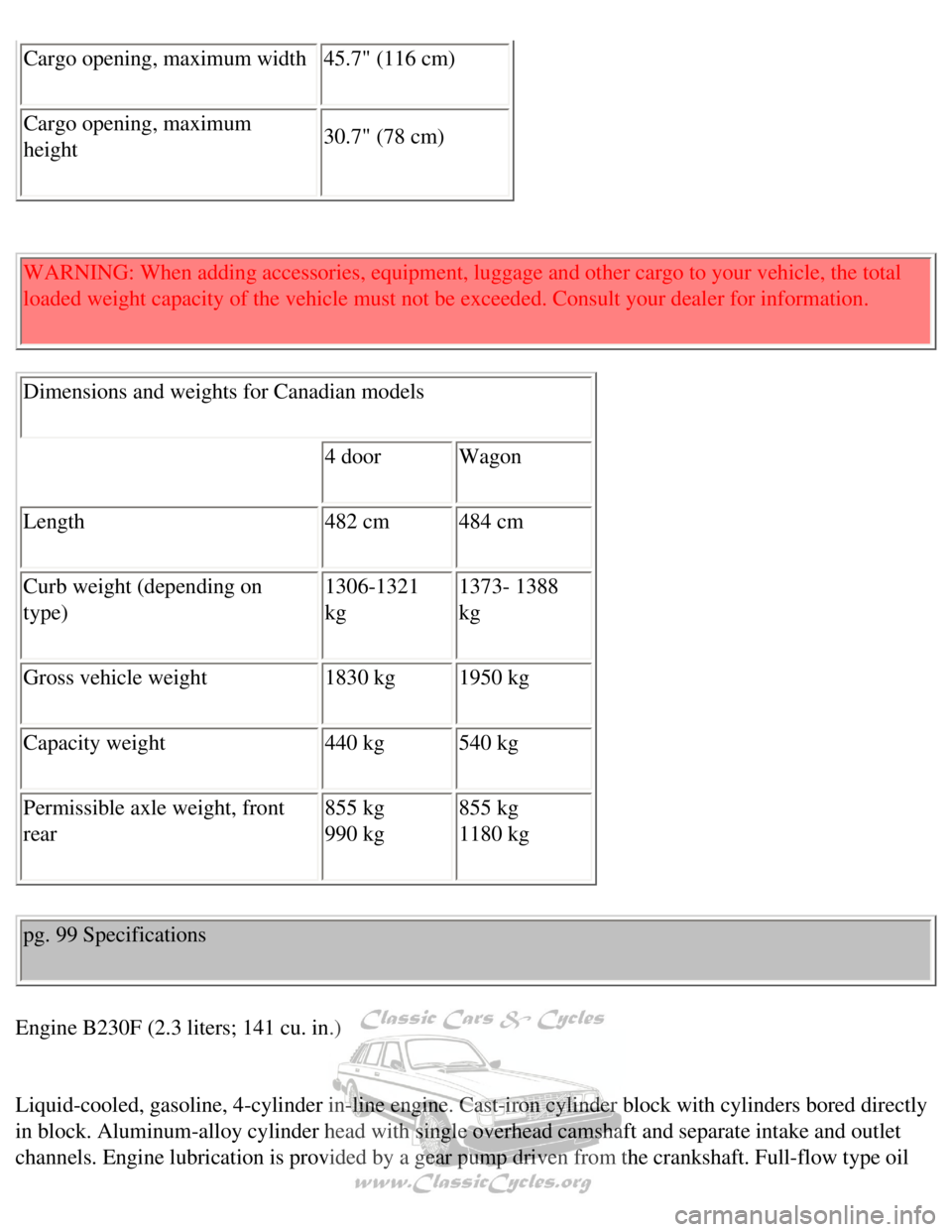gas type VOLVO 240 1990 Owners Manual
[x] Cancel search | Manufacturer: VOLVO, Model Year: 1990, Model line: 240, Model: VOLVO 240 1990Pages: 143, PDF Size: 2.32 MB
Page 88 of 143

Volvo 1990 240 Model
complete unit.
Replace more frequently if contaminated fuel was introduced into the tan\
k.
Fuel system cap, tank, lines and connections
The ability of the fuel system to control hydrocarbon emissions is depen\
dent largely on a leak-free
system. Check for proper sealing of gasoline filler cap which contains "\
O"-ring type seals. Check all
evaporative hoses in vehicle for tightness. Check fuel lines under vehic\
le. Repair if necessary.
Air cleaner
Replace the air cleaner cartridge every 30,000 miles (48,000 km). The \
cartridge should be replaced more
often when driving under dirty and/or dusty conditions.
The filter cannot be cleaned and should always be replaced with a new on\
e.
Checking and adjusting idle speed
Your Volvo is equipped with an electronically controlled idle speed syst\
em that requires no period
checking or adjustment.
Lamda-sond (oxygen sensor) system
This is an emission control system designed to reduce emissions and impr\
ove fuel economy. An oxygen
sensor monitors the composition of the exhaust gases leaving the engine.\
The exhaust gas analysis is fed
into an electronic unit which continuously influences the amount of fuel\
injected. This adjusts the air-
fuel ratio to provide optimum conditions for combustion and efficient re\
duction of the three major
pollutants (hydrocarbons, carbon monoxide and nitrogen oxides) through\
a 3-way catalytic converter. pg. 67 Servicing
file:///K|/ownersdocs/1990/1990_240/90240_14.htm (3 of 7)12/30/2006 8:\
25:08 AM
Page 89 of 143

Volvo 1990 240 Model
Oxygen Sensor
On the B230F engines, the oxygen sensor (Lambda-sond) is electrically \
heated. The use of a PTC
(Positive Temperature Coefficient) element to heat the Lambda-sond ens\
ures a shorter warm up time
and continuous operation at its working temperature.
This type of Lambda-sond does not require periodic replacement.
Catalytic Converter
This is a supplementary device in the exhaust system, designed to reduce\
exhaust emissions.
This device is mainly a container with a ceramic material insert, design\
ed to let the exhaust gases pass
through channels in the insert. The channel walls are covered by a thin \
layer of platinum and rhodium.
These metals act as catalysts, permitting a chemical action to occur wit\
hout actually taking part in it.
The carbon monoxide content will increase if the Catalytic Converter is \
damaged.
CAUTION:
Vehicles with Catalytic Converter must use unleaded fuel only. Otherwise\
the Catalytic Converter will
become damaged and ineffective.
Torque catalytic converter mounting bolts
The Catalytic Converter mounting bolts should be re-torqued at the 600-1\
,200 mile (1000-2000) km
inspection.
pg. 68 Servicing
Engine Crankcase Ventilation System
file:///K|/ownersdocs/1990/1990_240/90240_14.htm (4 of 7)12/30/2006 8:\
25:08 AM
Page 91 of 143

Volvo 1990 240 Model
Evaporative control systems
Vehicles intended for the North American market are equipped with a fuel\
vapor evaporative control
system, which prevents gasoline fumes from being released into the atmos\
phere.
The system is comprised of an expansion chamber in the fuel tank, a roll\
-over valve on the cross
member in front of the fuel tank, and a charcoal canister with built-in \
vacuum valve. The components
are interconnected by hoses which channel fuel vapor from the gas tank t\
o the charcoal filter where they
are stored until the engine is started and then drawn into the engine fu\
el induction system.
Engine Ignition
Change spark plugs
The spark plugs should be changed every 30,000 miles (48,000 km).
However, prolonged city driving or fast highway driving may necessitate \
changing spark plugs after
10,000 miles (16,000 km) of driving. When installing new plugs, be sur\
e to fit the right type and use the
correct torque, see "Specifications".
When changing the spark plugs, check that the suppressor connectors are \
in good condition. Cracked or
damaged connectors should be replaced.
When changing spark plugs, clean the cables and cable terminals, also th\
e rubber seals. If the car is
driven on roads where salt is used during the winter, coat the cables wi\
th silicone.
file:///K|/ownersdocs/1990/1990_240/90240_14.htm (6 of 7)12/30/2006 8:\
25:08 AM
Page 123 of 143

Volvo 1990 240 Model
pg. 91 Long distance trips, Cold weather
Prior to a long distance trip
Have your car checked at a Volvo dealer. Preventive maintenance will hel\
p to ensure a trouble free trip.
Remember to take along a Volvo dealer directory.
The main items to check are listed below:
1. Brakes, front wheel alignment and steering gear.
2. Engine running condition.
3. Fuel system operation.
4. Oil leaks: engine, transmission, rear axle.
5. Cooling system for leaks or worn hoses.
6. Examine tires carefully, replace worn tires.
7. Battery and terminals.
8. Tool equipment.
9. Lighting.
10. Drive belts, for tightness and wear.
11. All fluid levels.
Cold weather/Engine fuel system
During the winter, large variations in temperature cause condensation to\
form in the fuel tank and can
impair the running of the engine. This can be reduced by adding dry gas \
to the fuel. There is less risk of
condensation forming in the fuel tank if it is kept full or nearly full.\
Engine cooling system
Volvo type C (blue-green) coolant should be used all year round. The c\
ooling system should always
contain water plus anti-freeze and rust inhibitor, even during the summe\
r. Experience has also shown
that extremely weak anti-freeze solutions (10-25 percent) are ineffect\
ive for rust protection. For this
reason, the quantity of antifreeze/summer coolant should be about 50 per\
cent of the solution. This
lowers the freezing point to - 30 ° F (-35 ° C).
Engine lubricating system
file:///K|/ownersdocs/1990/1990_240/90240_19.htm (1 of 7)12/30/2006 8:\
25:13 AM
Page 132 of 143

Volvo 1990 240 Model
Cargo opening, maximum width 45.7" (116 cm)
Cargo opening, maximum
height 30.7" (78 cm)
WARNING: When adding accessories, equipment, luggage and other cargo to \
your vehicle, the total
loaded weight capacity of the vehicle must not be exceeded. Consult your\
dealer for information.
Dimensions and weights for Canadian models
4 door Wagon
Length 482 cm 484 cm
Curb weight (depending on
type) 1306-1321
kg 1373- 1388
kg
Gross vehicle weight 1830 kg 1950 kg
Capacity weight 440 kg 540 kg
Permissible axle weight, front
rear 855 kg
990 kg 855 kg
1180 kg
pg. 99 Specifications
Engine B230F (2.3 liters; 141 cu. in.)
Liquid-cooled, gasoline, 4-cylinder in-line engine. Cast-iron cylinder b\
lock with cylinders bored directly
in block. Aluminum-alloy cylinder head with single overhead camshaft and\
separate intake and outlet
channels. Engine lubrication is provided by a gear pump driven from the \
crankshaft. Full-flow type oil
file:///K|/ownersdocs/1990/1990_240/90240_20.htm (3 of 14)12/30/2006 8\
:25:15 AM